May 1, 2020
Canon EOS R | Camera Review
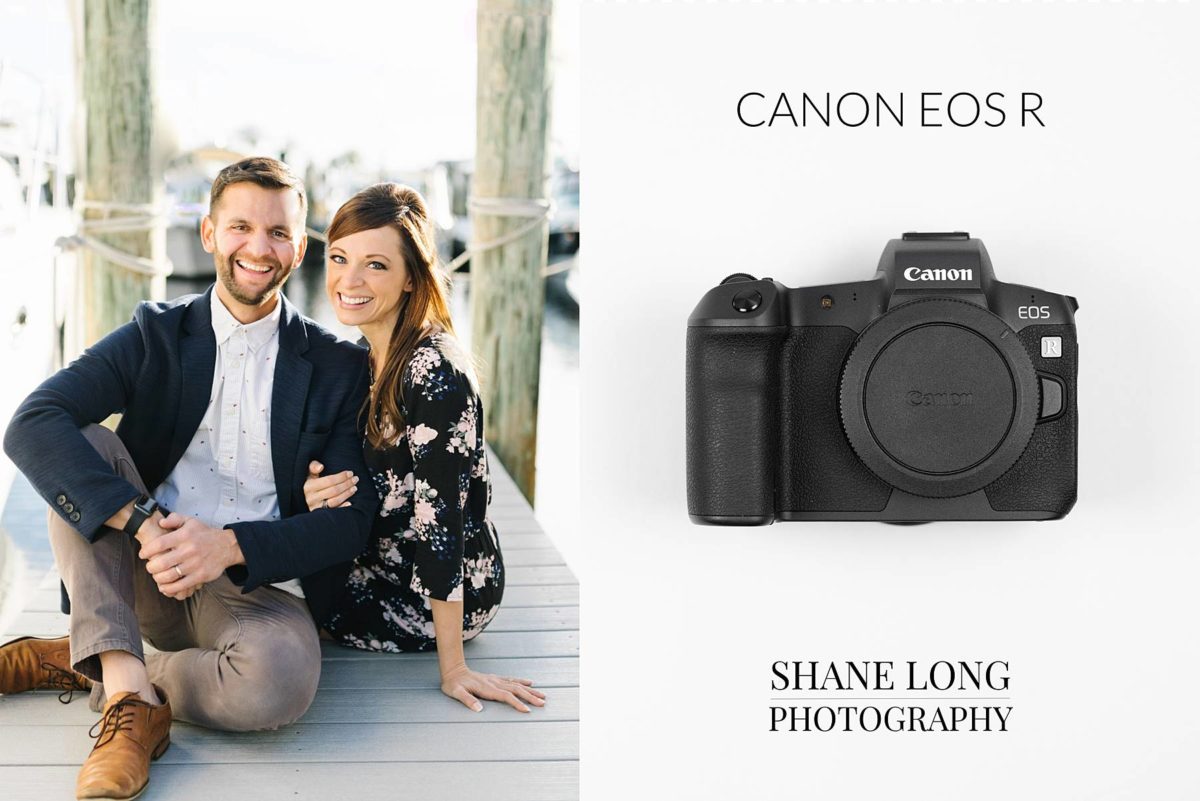
In October of 2018, Canon released my favorite camera of all time: the Canon EOS R mirrorless camera. For Canon pros familiar with full frame cameras, the Canon EOS R is essentially a mirrorless Canon 6D Mark II with the sensor of a Canon 5D Mark IV. I have actually preferred my Canon EOS R to my Canon 5D Mark IV, and at $1,700, I find the Canon EOS R produces images just as good or better than those of the Canon 5D Mark IV which currently retails at about $2,500. For anyone considering making the switch to a mirrorless camera, here are five things I love about the Canon EOS R:
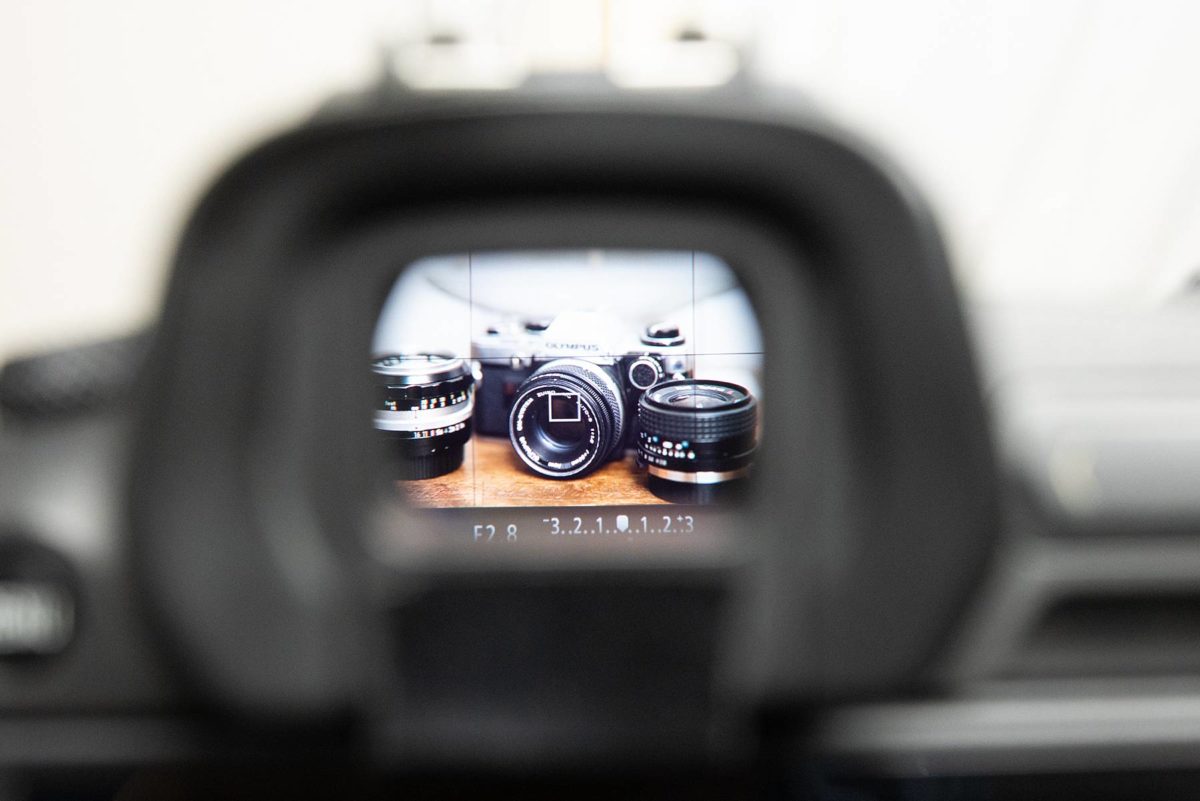
1. The Electronic Viewfinder
There are massive benefits to using the Canon EOS R‘s electronic viewfinder over using the traditional optical viewfinder found in DSLRs. The traditional viewfinder is essentially a mirror that bounces the light through the lens and up to the eye so the photographer can see what the lens sees. An EVF is a very small LCD screen that shows the photographer, live, what the photo will look like. This allows you to see if the exposure is too bright or too dark or if the white balance is off in camera! The EVF can be programed to display the histogram, grid lines, an electronic level, and other useful tools. The EVF display in the Canon EOS R isn’t super high resolution, but it is high enough that I am not distracted by it looking too pixelated, and it certainly doesn’t strain my eyes after photographing a wedding all day.
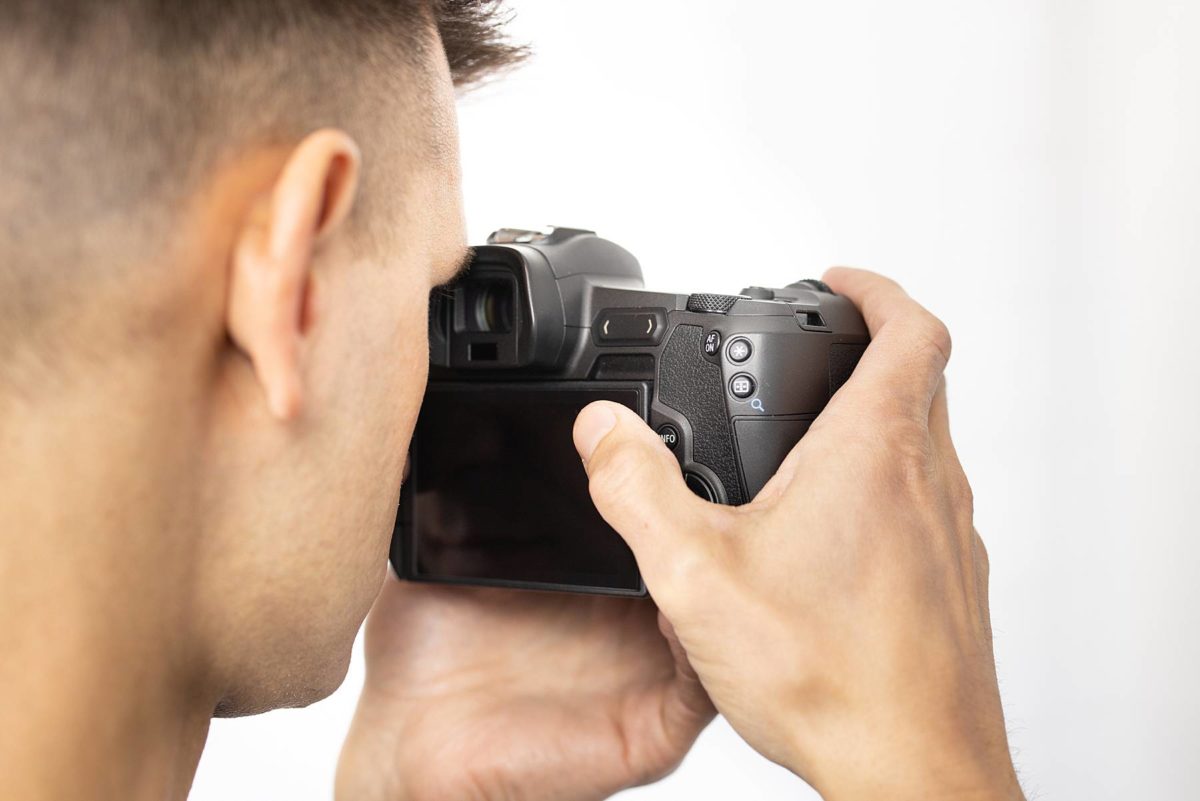
2. Touch and Drag Focus
This is a feature I discovered recently that I absolutely love! When photographing through the Canon EOS R‘s EVF, I have my camera set so that I can move the AF point by using my thumb on the rear LCD screen of the camera. As I move my thumb, I am able to see the the AF point moving through the EVF, allowing me to position the AF point exactly where I want it. It is much faster and more accurate than using the joystick on my Canon 5D Mark IV. No longer do I need to focus and recompose! I can compose my shot and then very quickly move my AF point to the subject of the photo. The only rare downside of this is that I do occasionally move the AF point by accident if my cheek or nose touches the LCD.
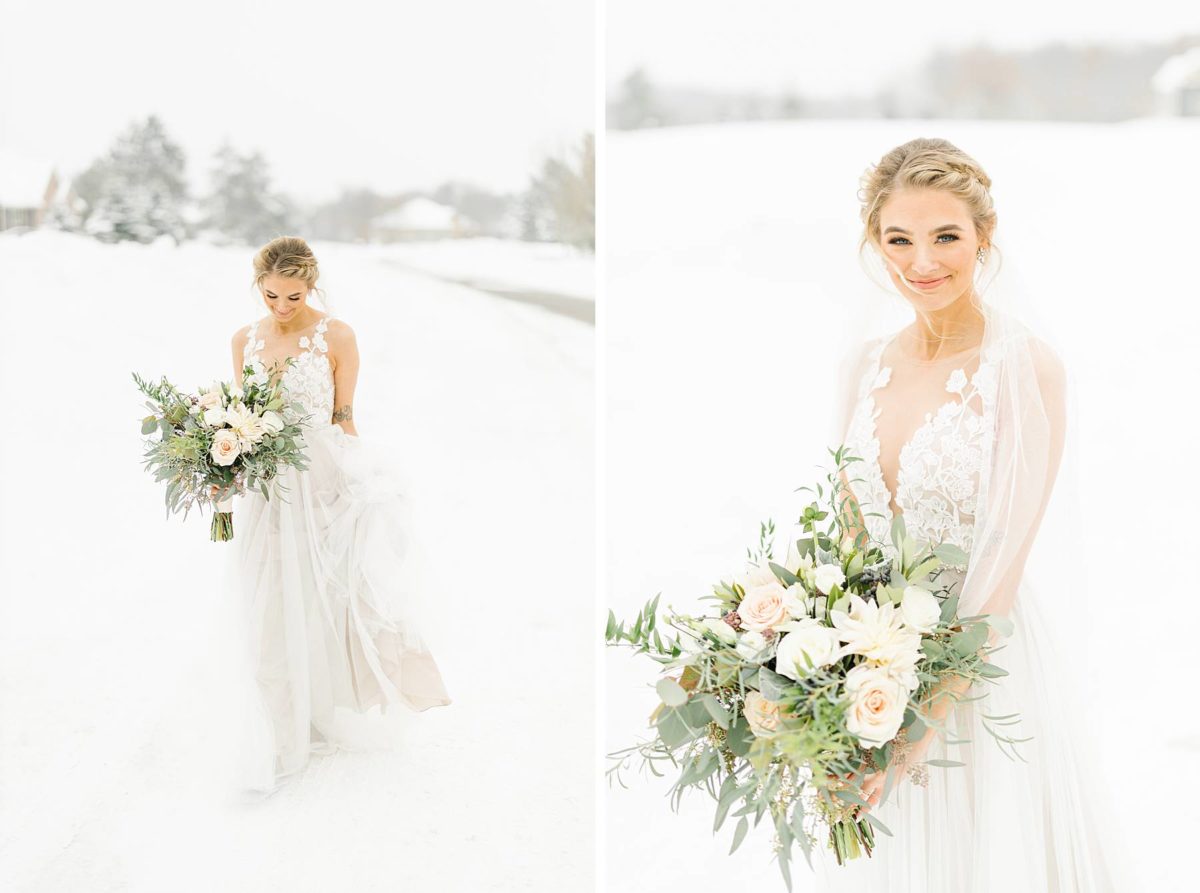
3. Eye Detection/AF Accuracy
This is perhaps my favorite feature of the Canon EOS R. The first time I used this camera, my jaw dropped as I reviewed the images. They were ALL in focus. No misses. No “almost” hits. Because the camera focuses digitally with dual pixel technology, it focuses extremely quickly and accurately. Combined with using the face and eye detection features, I was shocked at the percentage of photos that were perfectly in focus. With my old DSLR cameras, I had to take multiple photos to make sure I hit the focus on at least some of the shots. With the Canon EOS R, it’s been a “one and done” shot process!
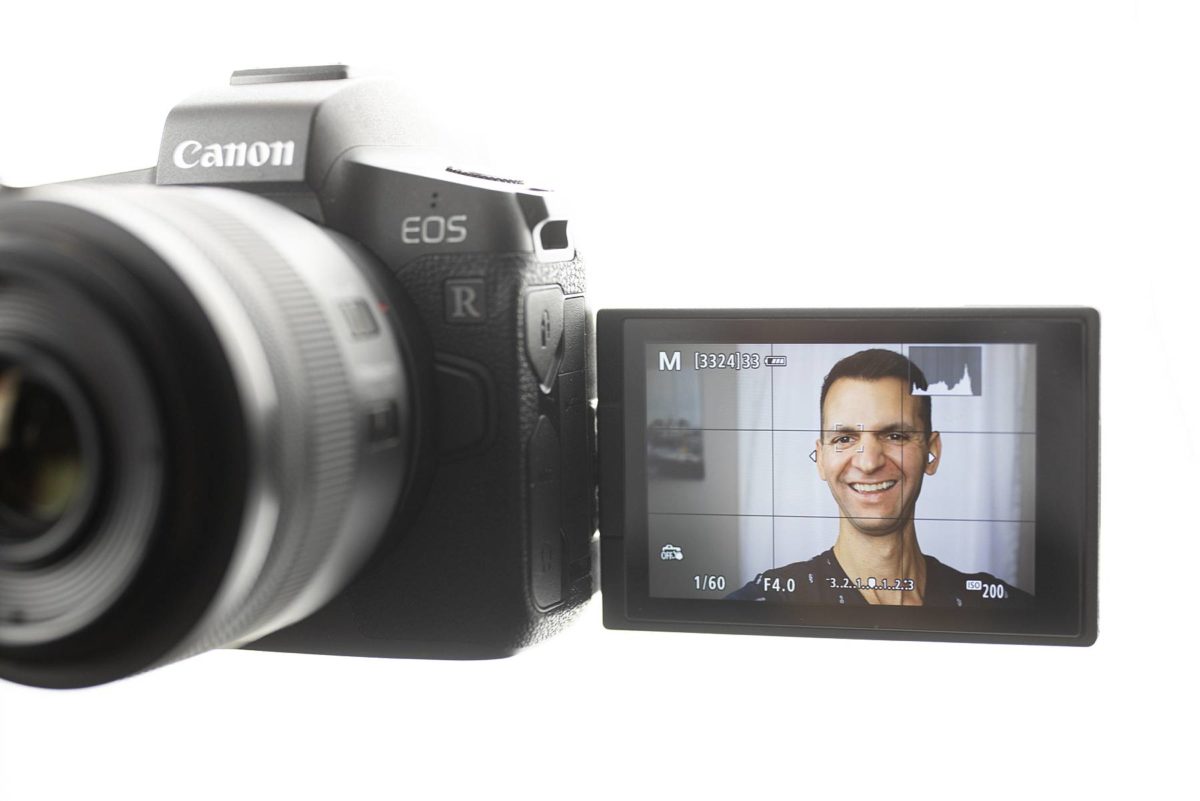
4. Tilt-out Screen
When I was first starting out, and switched from using the Canon 60D to the Canon 5D Mark III, the one thing I missed was the tilt-out screen. It was very useful for taking low and high angle photos as it allowed me to still view the screen while holding the camera either below my waist or above my head. I was thrilled when Canon included a tilt-out screen on the Canon EOS R! I also love that the tilt-out screen swings off to the side. Screens that tilt down don’t work when using tripods and screens that tilt up would have to extend far enough to go above the view finder.
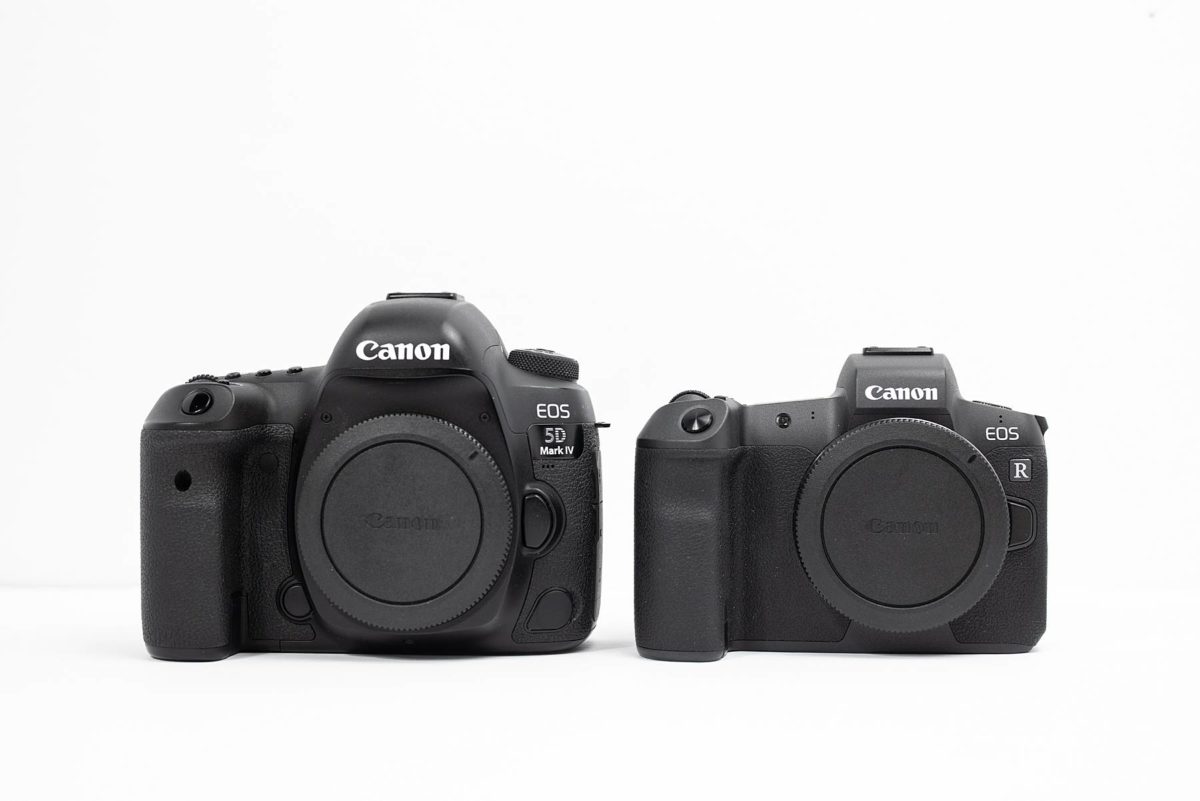
5. Size
The Canon EOS R is the perfect size with no extra bulk. I have always felt that the Canon 5D Mark IV was a little too big as my wrist would usually get tired from gripping it on long wedding days. The Canon EOS R, if anything, would err on the small side, but not by much. It is very lightweight, is easy to hold, and fits with room to spare in my Think Tank camera bag.
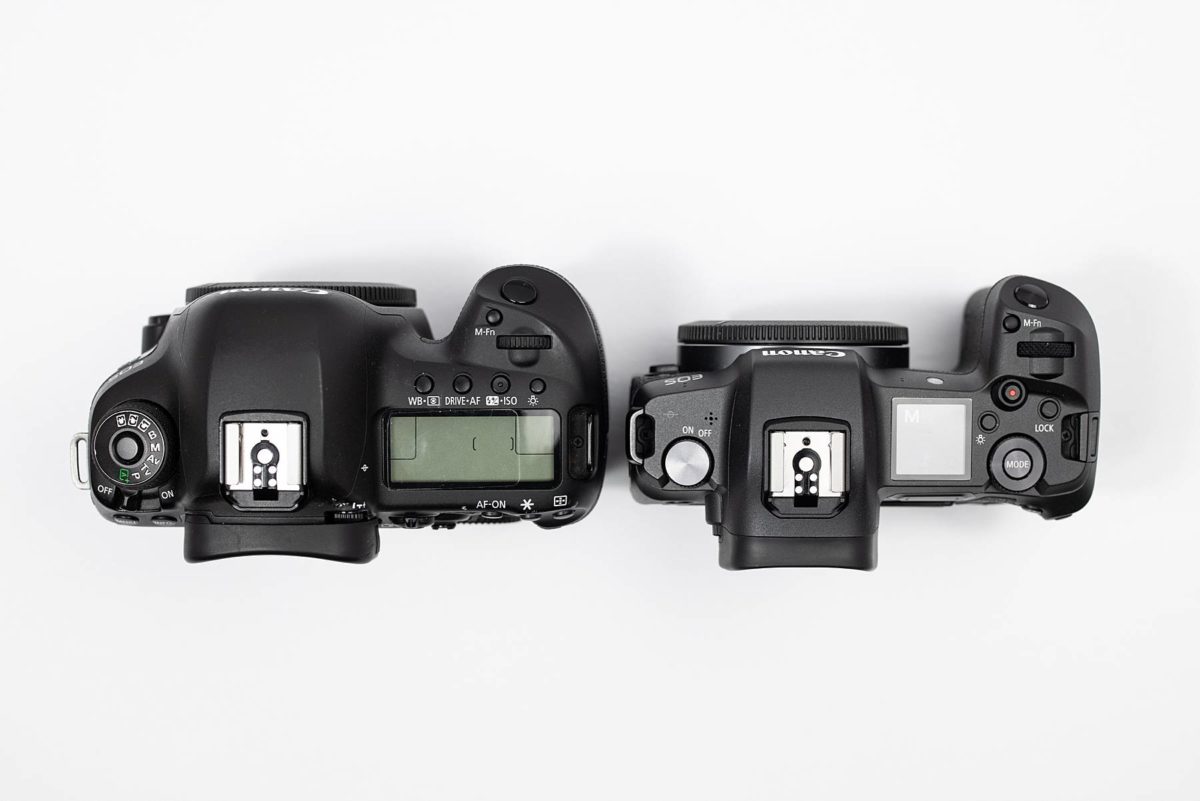
These are just five of the things I absolutely love about the Canon EOS R! As much as I love this camera, I would not say that it is perfect. There are a few features I would love to see in the next version of the Canon EOS R.
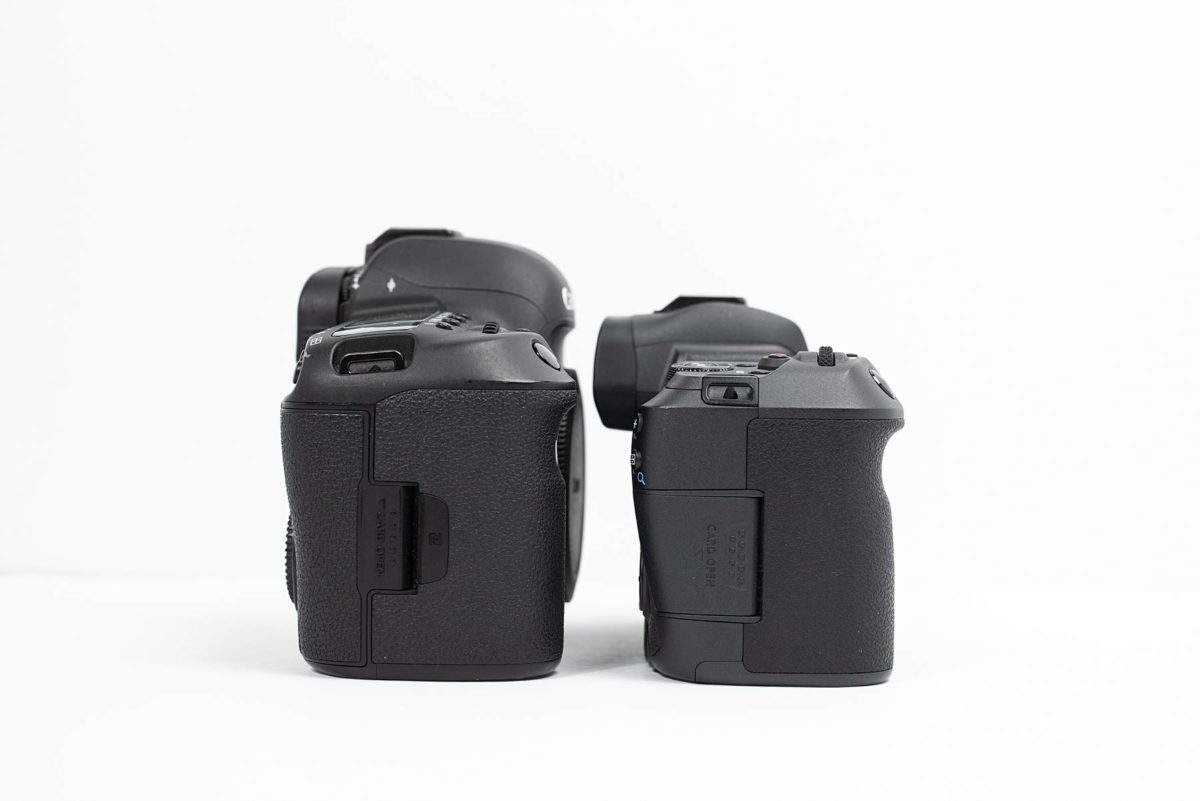
1. Dual card slots
While this would be considered a luxury by videographers or by those who are shooting with film, as a wedding photographer, I enjoy the added security of knowing that I am backing up my clients’ photos on two cards as I am shooting. Even though I have never experienced the setback of having a card fail, I do like to take extra precautions with my client’s images and also format my cards before every session. When I use my Canon EOS R at weddings, I also shoot with a Canon 5D Mark IV, so that I am capturing duplicate images. Using the Canon 5D Mark IV’s dual card slots, I shoot RAW to my SanDisk Compact Flash card and medium RAW to my second SanDisk SD card. That said, for sessions other than weddings, the need for two card slots is probably overkill as portrait sessions can always be recreated in an emergency where as wedding and event photography only happen once. For most photographers, the lack of dual card slots is not a deal breaker for those who deem it unnecessary.
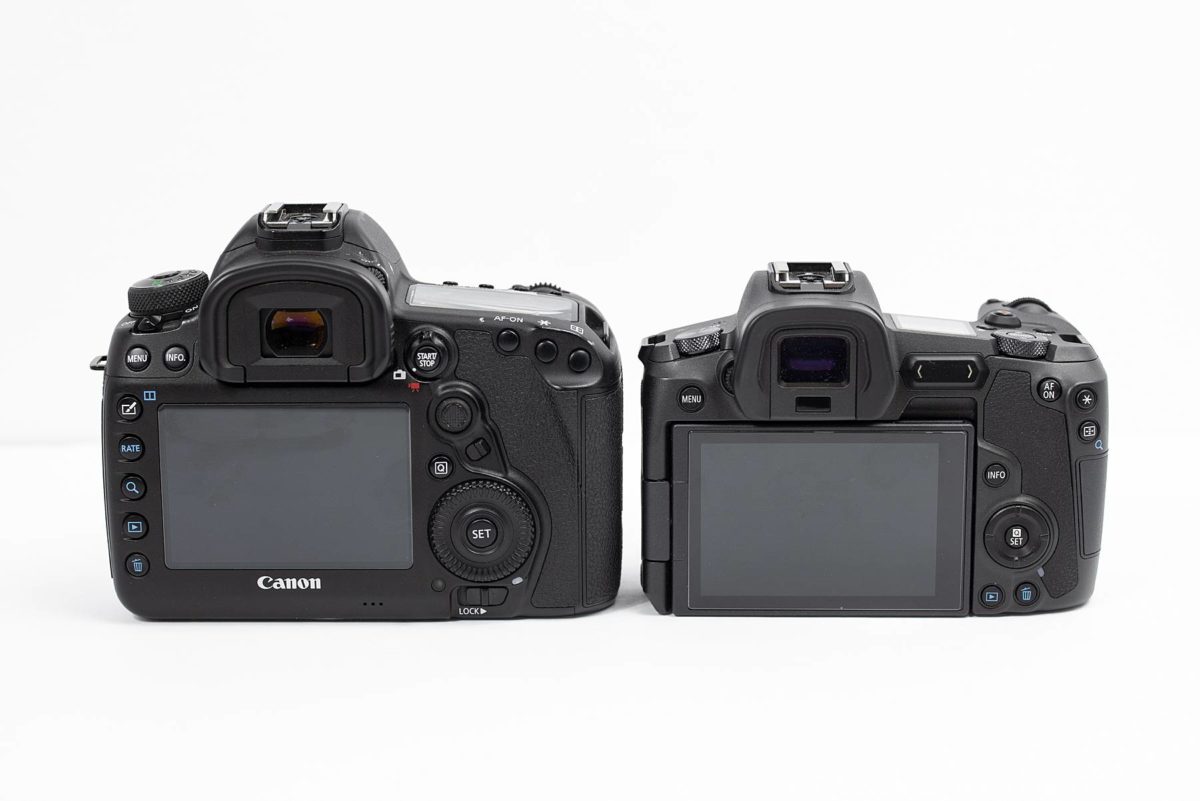
2. Scroll wheel
I honestly didn’t realize how much I used the scroll wheel on the Canon 5D Mark IV until I didn’t have it on the Canon EOS R. The scroll wheel allows for super fast image review, and the ability to rapidly change camera settings. The Canon EOS R does have a dial on the back that is combined with the Menu button, but I find that the dial’s location is not very convenient.
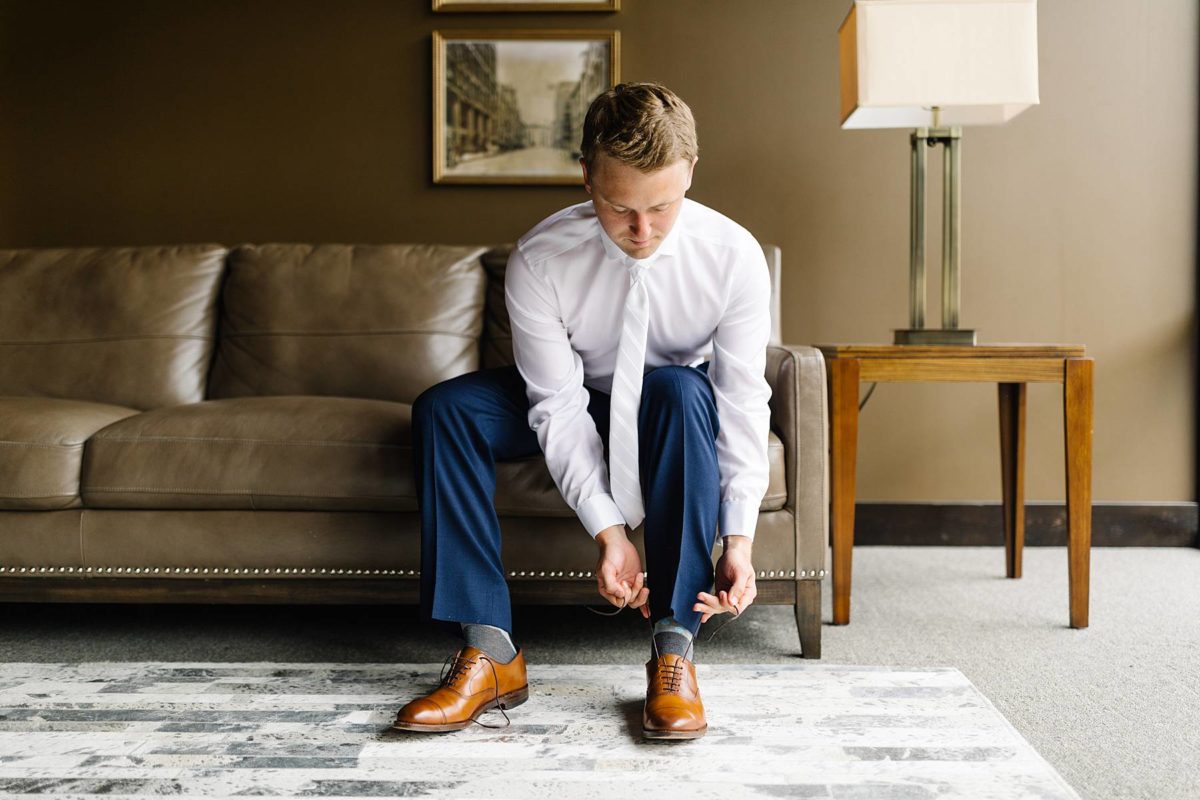
3. Quick start up time
Finally, I have noticed that occasionally the Canon EOS R boots up very slowly. While 3-5 seconds of time doesn’t seem like a big deal, there are times when it feels like a lifetime as a bride and groom wait in a pose. I have noticed that this usually happens when I go from shooting with an EF lens to shooting with an RF lens on the camera. Thus, perhaps the lag time is allowing the camera to reconfigure. Again, not a deal breaker as this doesn’t happen very often, at most maybe once or twice on a wedding day.
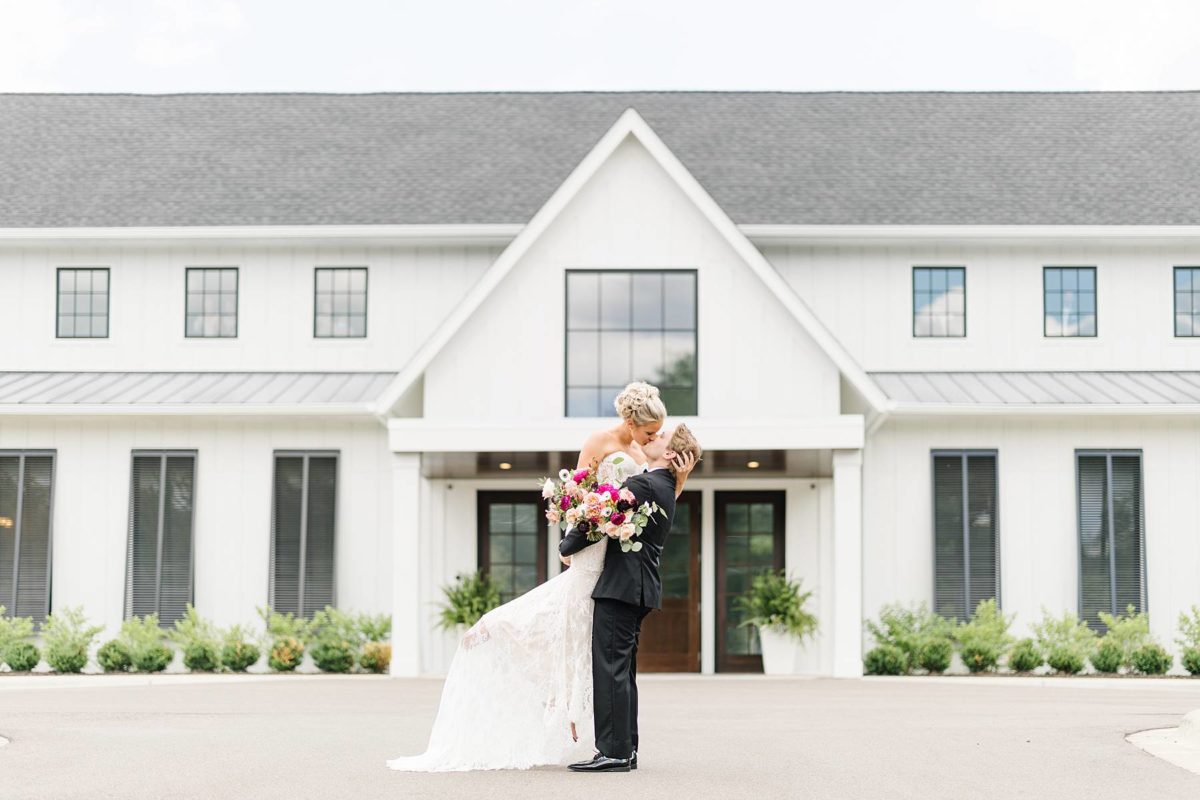
All that said, these small inconveniences have not prevented me from using and loving my Canon EOS R! I had been waiting for Canon to release a full-frame mirrorless camera ever since Sony had released their a7 mirrorless camera. At one point, I even bought a Sony a7 just to see what all the “mirrorless hype” was about. Though I loved the benefit of an electronic viewfinder, I found the overall experience with the Sony a7 to be unrefined and unreliable. I also didn’t like the idea of switching over to a new brand solely based on the current year’s best gear specs. I knew that given time, Canon would eventually release something comparable. And the Canon EOS R line is most definitely worth the wait!
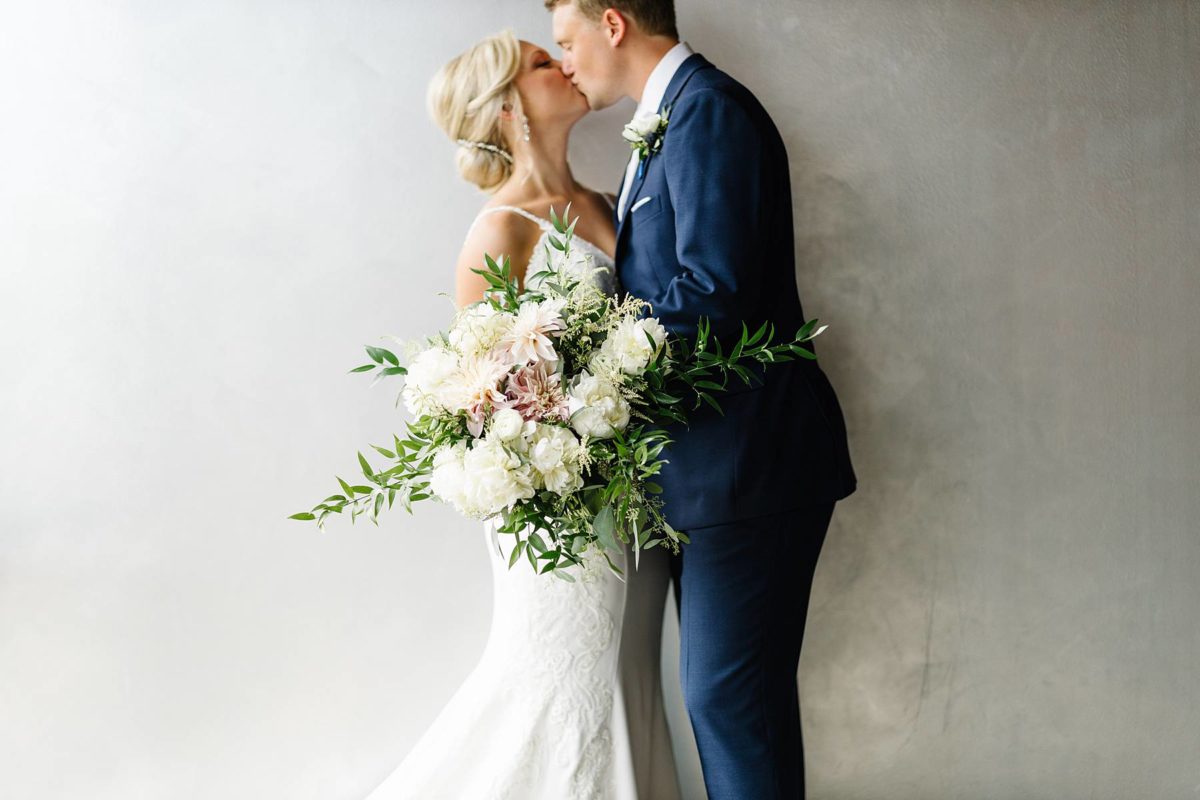
One big tip that I would offer to photographers to improve the shooting experience with the Canon EOS R, is to turn off the automatic image review and shoot in AI Servo with low speed continuous mode. This will prevent the camera from blacking out between each shot when shooting through the viewfinder. The flashing black screen between each shutter click can be distracting!
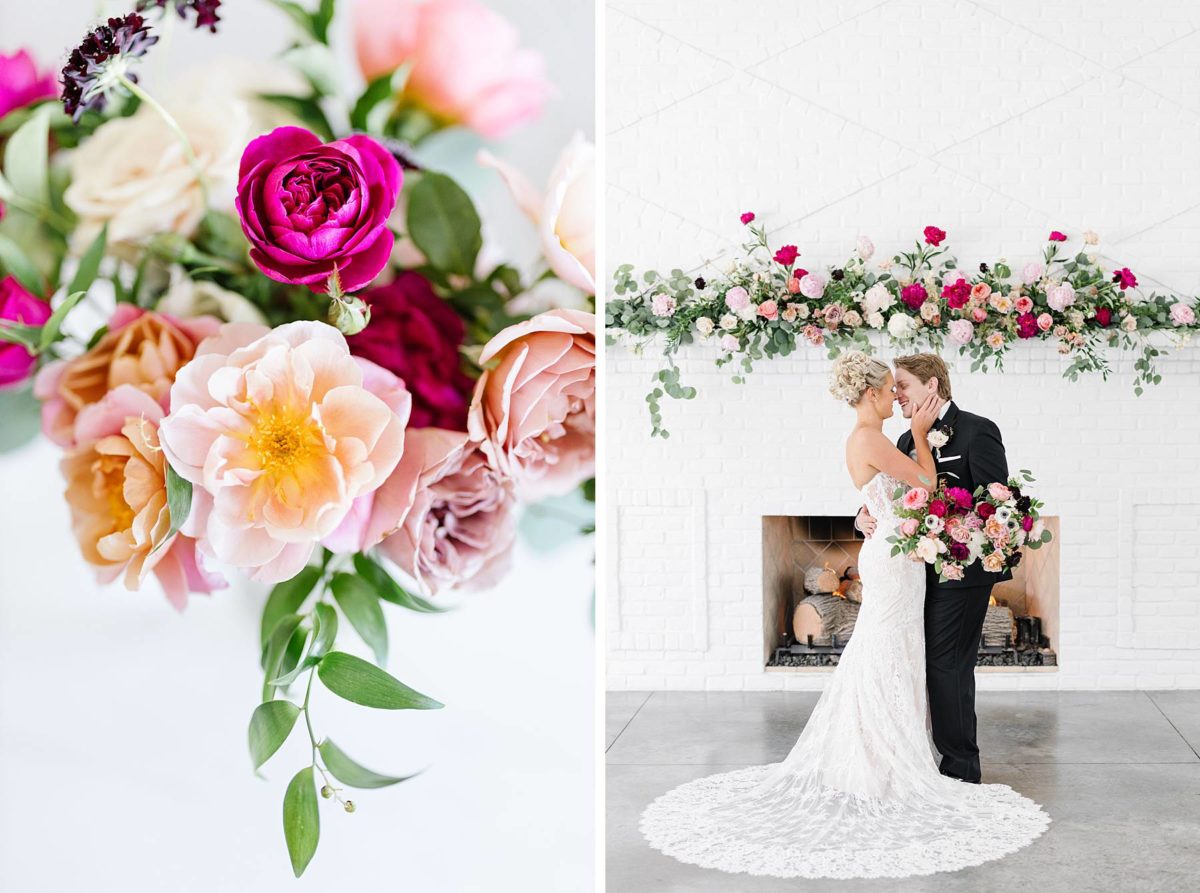
Conclusion
I honestly enjoy using the Canon EOS R more than my Canon 5D Mark IV and would use it exclusively if it had the dual card slot feature. While the Canon 5D Mark IV is more than capable as a professional camera, I have found the Canon EOS R’s AF performance to be superior, its EVF provides many real-time benefits, and my favorite lens of all time, the Canon RF 50mm f/1.2 L only works on the new system. I absolutely love the direction that Canon is heading with the new R line. It looks as if the most incredible and capable wedding camera will be released later this year: the Canon EOS R5. It adds dual card slots, a scroll wheel, and in-body stabilization, thus eliminating all of the current issues with the Canon EOS R. The only downside I can think of is that, given its incredible specifications, it will be significantly more expensive than the Canon EOS R. That said, I am currently counting down the days until I can pre-order the Canon EOS R5 – its predecessor has set a reputation of being worth its weight in gold!
For a detailed video review of the Canon EOS R, check out our YouTube review:
Share post on Social